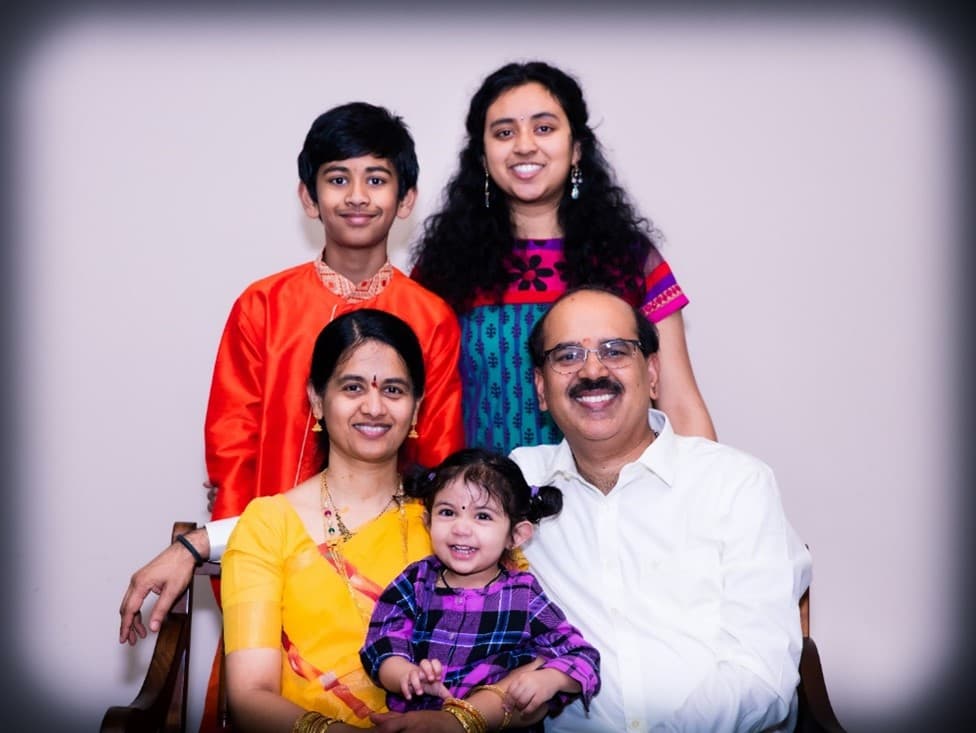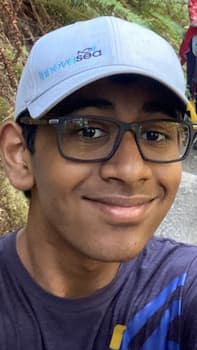The Race to Save Sirish’s Brain
2.16.2022 | Seattle Children's Press Team

Sirish was a healthy, happy boy with no underlying medical conditions aside from food allergies and eczema, both of which were easily managed at home.
Then one day, he spiked a fever.
Initially, his mother, Jyothi, a physician who previously practiced in India, wasn’t concerned. The fever broke, and Sirish seemed to improve.
About a week later, though, he spiked another fever. This time, medication didn’t help. Then, the unimaginable happened: he had a seizure.
Immediately, Jyothi called 911. An ambulance arrived and transported Sirish to the nearest emergency room. Shortly after arriving, he was coherent, and his fever had dissipated. They were discharged and were told to contact Seattle Children’s for a follow-up. If he had another seizure, they were advised to go to Seattle Children’s Emergency Department.
The family watched Sirish closely when they arrived back home. His temperament seemed different, which raised an alarm in the back of Jyothi’s mind. That night, Dec. 30, 2020, she slept close to him. In the early hours of the morning, Sirish had another seizure. Again, the family called 911, and they were transported directly to Seattle Children’s.
Quickly, a team of multidisciplinary specialists converged. Shortly after arriving at the Emergency Department, Sirish was taken to the Pediatric Intensive Care Unit. He underwent a myriad of tests to rule out infection, a possible metabolic trigger or tumor. Providers also sent out a genetic analysis to help better understand what could be causing the seizures.
His seizures were prolonged, and therapies weren’t controlling his seizures despite an escalation of medications. “It was incredibly frightening,” said Jyothi.
A rare case
While at Seattle Children’s, Sirish was diagnosed with Febrile Infection Related Epilepsy Syndrome. FIRES is the explosive onset of super-refractory status epilepticus, which occurs when a previously well child has back-to-back seizures that continue or recur for 24 hours or longer.
Dr. Mark Stephen Wainwright, division chief and director of the Neurocritical Care Program, said cases like Sirish’s are very rare.
“We only see two or three cases a year,” he said.
Pushing the envelope
Sirish was sedated and placed in a drug-induced coma to stop the seizures. Surrounding him was a vast care team.
“His care required a really high level of expertise, which few pediatric hospitals can deliver,” Wainwright said. As one of the top-ranked pediatric neurology and neurosurgery programs in the U.S., Seattle Children’s Neurosciences Center was well equipped to handle Sirish’s case.
“I had a million questions,” Jyothi said. “I wanted to know why all these things were happening to my son. The team at Seattle Children’s did every test possible. They checked everything. I told myself, ‘I’m okay even if I don’t know the reason. I just want my son to get better.’”
Every test came back normal. Every scan, blood test, even the genetic analysis – there was no smoking gun.
“We did a very extensive evaluation for an infectious, autoimmune, metabolic or genetic cause and found nothing,” Wainwright said.
“I was afraid to leave him, even for a moment,” she said.
“One day, you’re a really healthy lad. Then, 48 hours later, that same child is in a drug induced coma and you’re having to tell the family their child might not survive, and if they do, their brain might be permanently damaged.” — Dr. Mark Wainwright
Over the next few weeks, the care team tried a combination of different therapies, including Ketamine and Zulresso, a drug used to treat postpartum depression. Wainwright was previously involved in an international trial involving Zulresso to treat super-refractory status epilepticus. Sirish was also put on a ketogenic diet.
“We are consistently pushing the envelope for our patients; it’s a credit to Seattle Children’s and our teams,” Wainwright said. “In these cases, previously healthy kids can decline very quickly. Their treatment requires meticulous care to protect the brain and other vital organs. We work to understand the science, think through potential risks, and ultimately do everything we can medically to help a child’s brain.”
Finding hope
 On Jan. 16, 2021, Jyothi finally began to find hope again. She could see small improvements in her son.
On Jan. 16, 2021, Jyothi finally began to find hope again. She could see small improvements in her son.
“I could tell he was responding to my voice and my touch,” Jyothi said.
The team closely monitored Sirish and cared not just for him, but also for Jyothi and her family.
“For the rest of my life, I can’t thank the team enough,” Jyothi said. “I appreciate all the people who cared for us. They didn’t just support my son, they supported me. I felt like I was part of the care team.”
Jyothi said Sirish’s care was seamless.
“Communication between the teams was incredible,” she said. “There was absolutely no gap at all. As a physician, I know how hard that can be to maintain. When information is passed along, it can dilute. That never happened here.”
“They treated him like they were treating their own family,” Jyothi said. “I saw it within the neurology team, the rehabilitation team, the nurses, even the cleaning team. They cared for each of us.”
When Sirish began to improve, the teams celebrated. After spending nearly two months in the hospital, Sirish was finally able to go home. After what felt like a marathon, they were discharged.
“By looking at him today, it’s hard to tell he’s gone through all these things,” says Jyothi.
Uncovering the mysteries of the brain
 The cause of Sirish’s seizures is still unknown, but he’s back to being a happy child. Today, Sirish is 13 years old and enjoys spending time with his family, playing games and watching Marvel movies. He’s still under the watchful eye of his care team at Seattle Children’s and takes medication.
The cause of Sirish’s seizures is still unknown, but he’s back to being a happy child. Today, Sirish is 13 years old and enjoys spending time with his family, playing games and watching Marvel movies. He’s still under the watchful eye of his care team at Seattle Children’s and takes medication.
“This lad had a very good outcome,” Wainwright said. “And that’s a product of a lot of thought and commitment from the critical care team, neurologists, rehab team, nurses and physicians and a massive team that all coalesced to think through how we stop the seizures, protect the brain and promote the best possible recovery for the child.”
Jyothi said she appreciates everything Seattle Children’s has done for her family. She said one day she’d love to work at Children’s.
“Even if it’s the smallest job, I would be grateful,” she said.